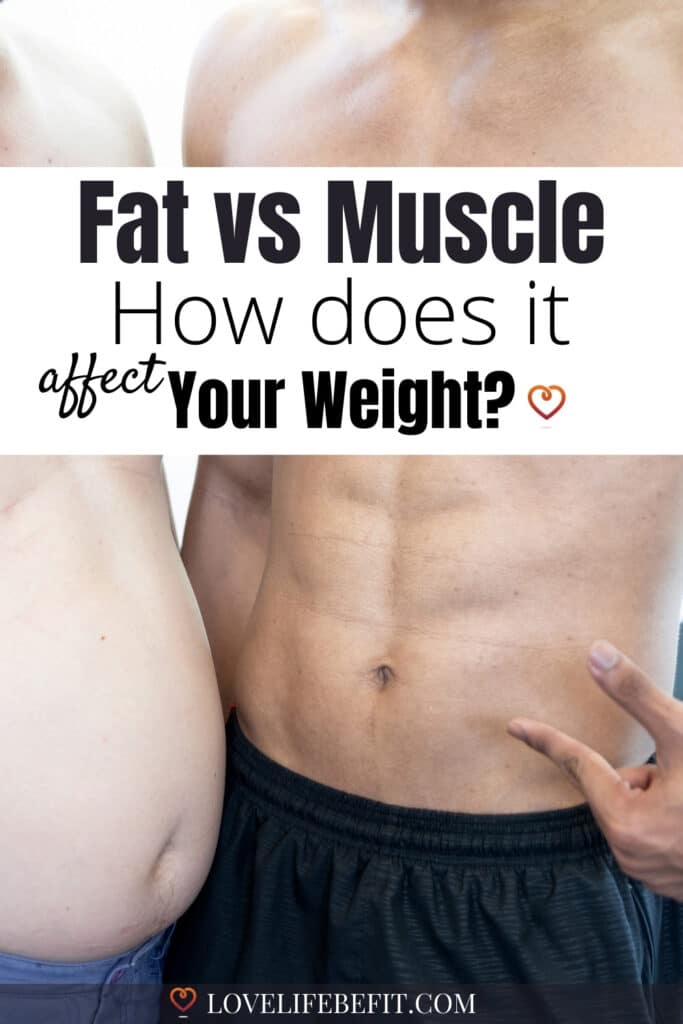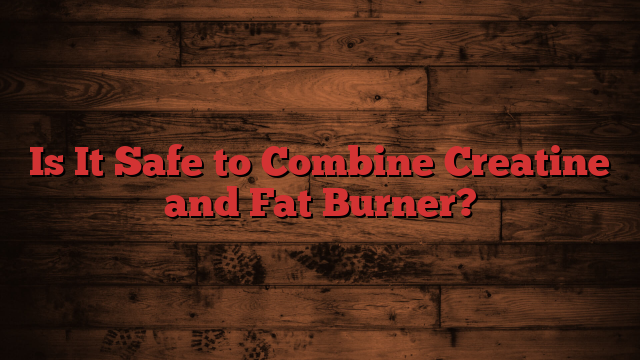Have you ever wondered why 5 pounds of fat and 5 pounds of muscle look completely different on your body? It’s a fascinating topic that many of us are curious about. In this comprehensive guide, we will delve into the key differences between fat and muscle, and give you a better understanding of how they affect your overall appearance and health. So, if you’re ready to learn more, keep reading!
Let’s start by understanding the basics. Fat is often portrayed as something negative, but it’s actually an essential part of our body composition. It provides insulation, cushioning, and energy storage. On the other hand, muscle is responsible for our body’s movement and strength.
When you have more muscle mass, your metabolism is naturally higher, making it easier to burn calories and maintain a healthy weight. In this article, we will explore the key differences between fat and muscle in terms of their texture, density, and how they affect your overall body shape.
So, whether you’re aiming to lose fat or build muscle, stay tuned because we’ve got you covered!

What is Fat?
Definition of Fat
Fat, also known as adipose tissue, is an essential component of the human body. It is a specialized connective tissue that is primarily responsible for storing energy. Fat cells, or adipocytes, store excess energy in the form of triglycerides, which can be broken down to release energy when needed. While fat often gets a bad reputation due to its association with weight gain and obesity, it plays several vital roles in the body.
Types of Fat
There are two main types of fat found in the body: white adipose tissue (WAT) and brown adipose tissue (BAT). White adipose tissue is the most common type of fat and is primarily responsible for energy storage. It is found under the skin, around organs, and between muscle fibers. Brown adipose tissue, on the other hand, is involved in thermogenesis, a process that generates heat. It is more prevalent in newborns and hibernating animals but can also be present in adults, particularly in the neck and upper back areas.
Functions of Fat
Fat serves several important functions in the body. Firstly, it acts as an energy reserve, storing excess calories that can be utilized during periods of fasting or increased energy demands. Fat also acts as insulation, providing a layer of protection for internal organs and helping to regulate body temperature. Additionally, fat serves as a cushion, protecting vital organs from external impacts. Fat is also involved in hormone production and plays a role in the absorption and transportation of fat-soluble vitamins.
What is Muscle?
Definition of Muscle
Muscle refers to the contractile tissues in the body that enable movement and provide stability. Muscles are made up of muscle fibers, which are composed of myofibrils. The contraction of these muscle fibers allows for various body movements, including walking, running, lifting, and even breathing. Muscles are classified into three main types: skeletal muscles, cardiac muscles, and smooth muscles.
Types of Muscle
Skeletal muscles, also known as voluntary muscles, are attached to the bones and enable voluntary movements. They are responsible for actions such as picking up objects, bending the limbs, and facial expressions. Cardiac muscles, on the other hand, make up the walls of the heart and are responsible for contraction and relaxation, enabling the heart to pump blood. Smooth muscles are found in the walls of internal organs and blood vessels and are responsible for involuntary movements such as digestion and blood flow regulation.
Functions of Muscle
Muscles play a crucial role in overall movement and stability. Skeletal muscles provide the strength and power required for physical activities. Cardiac muscles enable the heart to pump blood efficiently and maintain circulation throughout the body. Smooth muscles control the movement of various substances, such as food through the digestive system or blood through blood vessels. Additionally, muscles contribute to posture, body shape, and overall body composition.

Composition
Comparison of Fat and Muscle Composition
Fat and muscle differ significantly in their composition. Fat is primarily made up of adipocytes, which contain lipids or fats. These lipids include triglycerides, phospholipids, and cholesterol. Muscle, on the other hand, is composed of muscle fibers that contain proteins, particularly actin and myosin. These proteins are responsible for muscle contraction and movement.
In terms of density, muscle is denser than fat, meaning it weighs more than an equal volume of fat. This is why increased muscle mass can result in increased overall body weight, even if fat mass remains the same. However, muscle takes up less space than fat, meaning that a pound of muscle will occupy less space than a pound of fat. Therefore, an increase in muscle mass can lead to a more toned and sculpted appearance.
Proportions and Distribution
The distribution of fat and muscle in the body can vary between individuals. Men typically have a higher proportion of muscle mass compared to women, primarily due to hormonal differences. In contrast, women tend to have a higher proportion of body fat, particularly in the hips, thighs, and breasts, which are areas associated with fertility and childbearing.
The distribution of fat can also vary based on genetic factors and lifestyle choices. Some individuals may have a higher amount of visceral fat, which surrounds the internal organs and is considered more harmful to health. Others may have a higher amount of subcutaneous fat, which is found beneath the skin but outside the muscles and organs. The distribution of muscle mass can also vary, depending on physical activity levels and specific resistance training exercises.
Physical Appearance
Visual Differences
One of the most apparent differences between fat and muscle is their visual appearance. Fat appears soft, jiggly, and lumpy, whereas muscle appears firm, defined, and toned. When excess body fat is present, it can lead to a rounded and soft appearance. In contrast, well-developed muscles can create a more sculpted and athletic look. Regular resistance training and muscle-building exercises can help to increase muscle density and create a visually toned physique.
Texture and Consistency
Another difference between fat and muscle lies in their texture and consistency. Fat has a smooth and soft texture, while muscle feels harder and more solid. This is due to the differences in the composition and structure of these tissues. When touching an area with a higher fat content, it will feel softer and less firm. On the other hand, muscle will feel tight and firm when pressed.

Metabolism
Energy Expenditure
One of the notable differences between fat and muscle is their impact on energy expenditure. Muscle is considered metabolically active, meaning it requires calories even at rest. The more muscle mass a person has, the higher their resting metabolic rate (RMR) will be. This is because muscles use energy for maintenance and repair, even when not engaged in physical activity. In contrast, fat tissue is relatively metabolically inactive and does not require as many calories for maintenance.
Metabolic Rate
Metabolic rate refers to the speed at which the body burns calories for energy. Individuals with a higher proportion of muscle mass tend to have a higher metabolic rate, as muscles require more energy to function and maintain their structure. In contrast, individuals with a higher amount of body fat generally have a lower metabolic rate. This difference in metabolic rate can impact overall energy balance and weight management.
Role in Weight Management
Effect on Body Weight
Fat and muscle have different impacts on body weight. A pound of fat weighs the same as a pound of muscle, as weight is simply a measure of gravitational force. However, muscle is denser than fat, meaning it takes up less space. Therefore, increasing muscle mass while reducing fat mass can result in overall weight maintenance or even a slight increase in weight, while still achieving a leaner and more sculpted physique.
Impact on Metabolism
As mentioned earlier, muscle has a higher metabolic rate compared to fat, meaning it burns more calories even at rest. This can have a significant impact on weight management and weight loss. Increasing muscle mass through resistance training and regular exercise can help to boost the metabolism, resulting in a higher calorie burn throughout the day. On the other hand, a higher proportion of body fat can contribute to a slower metabolic rate and make weight loss more challenging.

Health Implications
Relationship with Chronic Diseases
The proportion of body fat and muscle mass can have significant implications for overall health. Excess body fat, particularly visceral fat, has been linked to an increased risk of various chronic diseases, including type 2 diabetes, cardiovascular disease, and certain types of cancer. In contrast, a higher proportion of muscle mass is associated with improved insulin sensitivity, better cardiovascular health, and a reduced risk of chronic diseases.
Risk Factors
Specific factors can influence the distribution of fat and muscle in the body and increase the risk of health complications. Sedentary lifestyles, poor dietary choices, and hormonal imbalances can contribute to a higher amount of body fat and a lower proportion of muscle mass. Additionally, genetic factors and age-related changes can impact the distribution and accumulation of fat and muscle. It is important to maintain a balanced lifestyle, engage in regular physical activity, and consume a nutritious diet to minimize the risk of health complications associated with fat and muscle imbalances.
Exercise and Nutrition
Influence on Fat Loss and Muscle Gain
Exercise and nutrition play a crucial role in both fat loss and muscle gain. Regular aerobic exercises such as running, cycling, or swimming can help to promote fat loss by burning calories and increasing overall energy expenditure. Resistance training exercises, such as weightlifting or bodyweight exercises, are essential for muscle growth and development. Including a combination of both cardiovascular exercises and resistance training in a fitness routine can optimize fat loss while preserving and building muscle mass.
Recommendations for Optimal Balance
To achieve an optimal balance between fat loss and muscle gain, it is important to focus on both exercise and nutrition. Incorporating a variety of exercises that target different muscle groups and incorporating progressive overload can stimulate muscle growth and development. Additionally, consuming a balanced diet that includes lean sources of protein, whole grains, fruits, vegetables, and healthy fats can support muscle growth and fat loss.

Aesthetics and Fitness Goals
Achieving Desired Body Shape
Understanding the differences between fat and muscle is crucial for individuals seeking to achieve a specific body shape or physique. Those aiming for a lean and toned appearance should focus on reducing body fat through a combination of calorie-controlled diets and regular exercise. On the other hand, individuals aiming to increase muscle mass and build a more muscular physique should prioritize resistance training exercises and consume adequate protein to support muscle growth.
Importance of Muscle Building
Moreover, muscle building is not just about aesthetics; it plays a vital role in overall health and well-being. Increased muscle mass can improve physical performance, enhance bone density, and contribute to better metabolic health. It is essential to emphasize the importance of muscle building in fitness routines to promote overall health and longevity.
Conclusion
Understanding the key differences between fat and muscle is essential for overall health and well-being. While fat and muscle may differ in their composition, appearance, and functions, both play important roles in the human body. Fat serves as an energy reserve, insulation, and cushion, while muscle enables movement and stability.
Recognizing the differences between fat and muscle can help individuals make informed decisions regarding their diet, exercise, and overall lifestyle choices. By striving for a balance between fat loss and muscle gain, individuals can optimize their body composition, improve metabolic health, and achieve their desired fitness goals.




